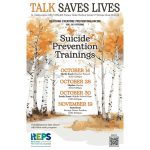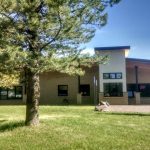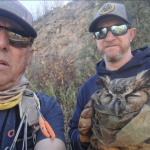Weekly Wellness: Straight talk about the importance of balance
UCHealth
You don’t have to lose your balance before you find it again.
Health and aging experts want to educate people on proactive ways they can maintain and even improve their balance as they age, as struggling with balance doesn’t have to be a natural part of getting older.
“Balance can be practiced – this is about prevention. It’s not that your balance will get worse and there’s nothing you can do about it. You just might have to work a little harder to keep and maintain it,” said Meghan Rapetski, a physical therapist with UCHealth SportsMed Clinic in Steamboat Springs. “As we get older, the ‘use it or lose it’ aspect becomes more evident.”
One in four Americans over the age 65 will fall in any given year, and falling one time doubles the risk of falling again.
“We want to keep people from falling,” said Rapetski. “Primary care physicians are doing a great job getting the word out and referring people to physical therapy. We want to work with patients before they fall, instead of needing to be reactive after a fall.”
What is proper balance?
Balance is a person’s ability to remain upright and steady, and depends on three crucial systems in the body working together. They are:
- Sensory, or the connection to the ground through the feet and ankles. Balance issues can occur for people with neuropathy or diabetes, as these afflictions can destroy nerves and affect a person’s gait and balance.
- Visual, or eyesight. People with vision problems should make sure they are wearing corrective glasses. It’s also important to have proper light inside and outside the home, especially at night, to prevent falls.
- Vestibular, located mainly in the inner ear. This sensory system provides information to the brain and helps individuals retain a sense of equilibrium. As a person ages, one can develop inner ear problems that can cause dizziness or vertigo, which is why routine hearing tests and wearing hearing aids, if appropriate, are keys to balance and safety.
“Different situations call for us to rely on one or two of these systems more than the other at any given time – for instance, if it’s day or night, if we walk on grass or pavement, whether we are on land or on a boat,” said Rapetski. “It varies depending upon the environment, the activity and the scenario.”
Ways we can improve our balance
If you’re worried about your balance or are experiencing issues, Rapetski suggests a physical therapy screening that entails a comprehensive evaluation to gauge problems, concerns and confidence levels around a specific activity. Depending on the results, recommendations could include scheduled therapy, home exercises, or using a cane or a walker.
“We’ll create an individualized balance plan to work on any deficits,” she said, adding that there are baseline recommendations according to age, gender and other criteria. The plan may include focusing on:
- Strength and sensation in the legs. The more strength in your legs, the easier it can be to perform transfers, such as in and out of a car or a restaurant booth.
- Flexibility, such as being able to reach down to put on shoes and socks, or having enough mobility in your hips to get off the floor from a sitting position.
- Mobility, which allows getting dressed while standing versus sitting.
- Balance while standing and walking, such as the ability to stand with your eyes closed on a cushion or on one leg. According to Rapetski, research shows the better you are standing on one leg, the less likely you are to fall.
- Walking speed. A person needs to be able to walk at 3.9 feet per second to safely cross a typical crosswalk in most communities. Being able to walk safely at that speed is crucial if you want to engage in your neighborhood, town or city.
“Physical therapy is a great balance resource for people. You can get screened, and even if you don’t have deficits, it’s helpful to know where you’re at,” said Rapetski. “If you are having problems, it’s good to be proactive and get ahead of any concerns, no matter your age.”

Support Local Journalism

Support Local Journalism
Readers around Steamboat and Routt County make the Steamboat Pilot & Today’s work possible. Your financial contribution supports our efforts to deliver quality, locally relevant journalism.
Now more than ever, your support is critical to help us keep our community informed about the evolving coronavirus pandemic and the impact it is having locally. Every contribution, however large or small, will make a difference.
Each donation will be used exclusively for the development and creation of increased news coverage.









